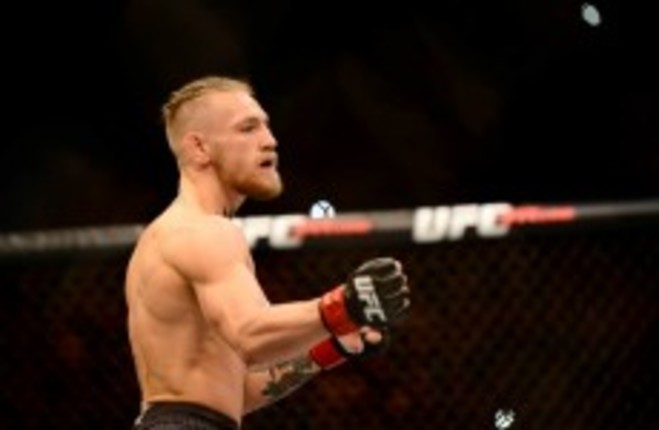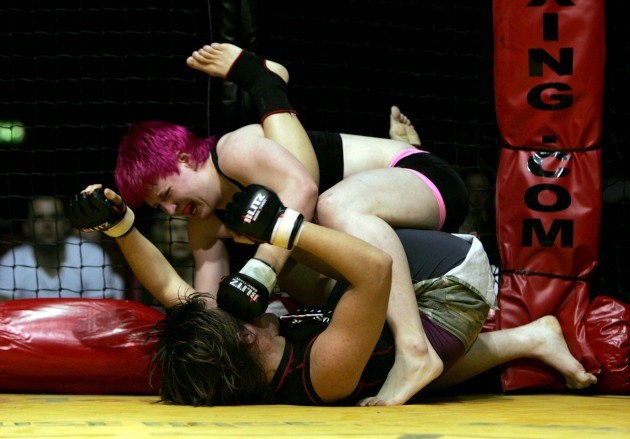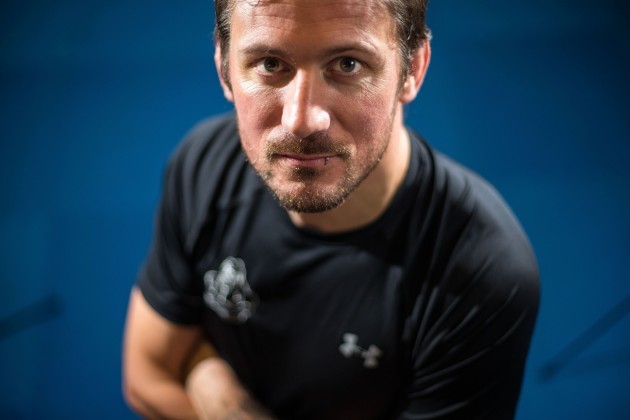FOR THE VAST majority of people, not just fighting, but rancour of any kind, is based on an emotional reaction. A perceived slight or insult can compel a person to temporarily abandon accepted behaviour and act out in a rash manner.
But for a mixed martial artist, the idea of physical confrontation has a vastly different meaning. For them, it is contextualised as a form of competition, and a means of making a living. Concepts like fear and anger – so often the motivations for conflict – must be harnessed, if they are to succeed in such a rarefied profession. The ability to do so, is what separates them from the rest of us.
However, even some of the sport’s elite do not innately possess this level of restraint, and it must be developed over time, just as any other element of their skill-set would be.
Sport psychologist David Mullins has been working with team SBG Ireland since 2009, and has played a key role in the maturation of some its more notable fighters. Mullins first encountered the group while doing a work placement for his Master’s degree in Applied Sport and Exercise Psychology at Waterford IT.
Initially, he interacted exclusively with Aisling Daily but over time, his remit extended to the other fighters in the team, as well as head coach John Kavanagh. The Galway-native realised quickly that he was among like-minded people.
“Coming in from college, I had no real term of reference. But right from the get-go with Aisling, the work was good. She was so open and honest, and she started to see the benefits of what we were doing quite quickly so, for me, it couldn’t have gone any better. It was the perfect way to start for me. Not just getting to work with Aisling, but John. The culture there fit so well with what I was trying to do – it’s all about growing, learning and trying to improve.”
Of course, this was at a time when the likes of Conor McGregor and Cathal Pendred were not household names, and still making their way on the regional circuit for next to no money. Mullins says that when he asks fighters in the early stages of their career what is it they hope to accomplish, the response is invariably the same.
“One of the first things I ask my fighters is what they want to achieve in this sport. The answer is always to get to the UFC. I’ll then say to them that this is something that you want and not to see it as pressure. It’s OK at times to a have a little bit of doubt or nerves, but always remember that this is where you want to be.”
For his work to be truly effective, Mullins believes that a level of transparency must exist between him and the fighters, so that the requisite amount of trust can germinate. The fundamentals of his approach are the same in each relationship, though they are tailored to best suit the individual’s personality.
“Trust, honesty and openness are huge, in terms of getting the best out of this work. A big part of my role is to get to know the things which are unique to a certain person. There could be two fighters who both have the goal of being in the UFC, but are motivated for very different reasons. A big part of my job is to get to know why they’re doing the things they’re doing. The techniques I’m doing might be the same, but the delivery can be different, depending on the individual. I’d like to think I’ve built a good relationship with everyone I’ve been lucky enough to work with. I want to get an idea of not just the fighter, but the person. I’ll take a look at things in their life outside of competition; what a typical week looks like for them, the type of support network they’ve got and if there are little issues cropping up that’s taking their focus from where they want it to be.”
Much like Irish rugby coach Joe Schmidt, Mullins puts a huge emphasis on ensuring optimum performance, not just winning or losing. This, he says, is about giving priority to the aspects of competition that an athlete can directly influence.
“I like to focus on the performance side of things, as supposed to the result or outcome. It’s more focussed on the process of getting the most out of the training and the performance on fight night. The outcome is non-controllable, so it’s good to be able to recognise the role you play in that. To do to things in the right way, and have the belief that the other stuff will look after itself.
“As a sport, MMA has more variables than most of the others. You can get caught with a shot, the judges might see things differently to you or the referee may dock a point or stop the fight too early.
“I want my guys free from all the other stuff that goes on around a fight. Not just the outcome, but things like who the opponent is, what’s being said by the press or the fans or what this fight might lead to next. You have to accept and acknowledge those things, and then free yourself from them, so you can go and focus on the things you can control.”
When speaking to any of the SBG fighters in the build-up to big fights, it quickly becomes evident that they spend little time dwelling on their opponents, and what threats they may pose. Mullins claims that catering preparations based on an opponent’s perceived strengths is counter-productive, and has informed his fighters accordingly.
“If a fighter focuses too much on an opponent – what his style is or what his record is, then they’re kind of taking away from who they are and what they bring to the table. I want the guys to put in a performance that they’re proud of, so they can look back and think that’s a good representation of who they are right now, as a fighter.
“It can become obsessive, almost. Just watching for everything that the opponent is going to do. Then you’ll always be reacting, as supposed to being proactive.”
He tries to get fighters into a head space where they view training not just as preparation for an upcoming fight, but a vital element in their evolution as mixed martial artists.
“I’ll always tell fighters that they’re not getting ready for fights, but improving. So the version of you in your next fight should be better than the version of you in the last one.
“I get guys to keep a journal of their training so that they can review their training in a real, practical way. A lot is about getting yourself in the frame of mind that you want to get the best out of a training session. How they’re talking to themselves when they’re under serious pressure; that is something that can be trained.”
In MMA, maintaining mental clarity in the face of adversity is a constant challenge. Just like the muscle memory required in throwing a combination of punches in the blink of an eye, this too, must be practiced consistently before becoming second nature.
“You have to train to become comfortable in uncomfortable situations – that’s about repetition. It’s about what you are focused on in that moment. Are you being instructional to yourself? It takes a lot of mental toughness to talk to yourself in that way of being instructional, when the pressure is on. I want their mind-set to be in the present, to allow their instinct to take over. I tell them to embrace the spectrum of emotions that come along with fighting, and then decide who they want to be on fight night, and then be free to go and be that guy.”


